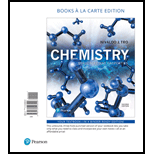
Chemistry: Structure and Properties, Books a la Carte PACKAGE W/MasteringChemistry, 2nd Edition
2nd Edition
ISBN: 9780134777559
Author: Tro, Nivaldo J.
Publisher: PEARSON
expand_more
expand_more
format_list_bulleted
Question
Chapter 20, Problem 74E
Interpretation Introduction
To determine:
Energy absorbed by the 55.0 g of laboratory mouse if he has a dose of 20.5 rad of radiation.
Expert Solution & Answer
Want to see the full answer?
Check out a sample textbook solution
Students have asked these similar questions
Draw the mechanism for the formation of diol by starting with one pen and all in...
basic conditions
then
acidic conditions
then draw the mechanism for the formation of a carboxylic acid from your product.
Draw the mechanism for the oxidation of 3-bromo-cyclohexan-1-ol.
Convert the following Fischer projection to Haworth projections. show work and show the arrows please.
Chapter 20 Solutions
Chemistry: Structure and Properties, Books a la Carte PACKAGE W/MasteringChemistry, 2nd Edition
Ch. 20 - Prob. 1ECh. 20 - Prob. 2ECh. 20 - Prob. 3ECh. 20 - Prob. 4ECh. 20 - Prob. 5ECh. 20 - Prob. 6ECh. 20 - Prob. 7ECh. 20 - Prob. 8ECh. 20 - Prob. 9ECh. 20 - Prob. 10E
Ch. 20 - Prob. 11ECh. 20 - Prob. 12ECh. 20 - Prob. 13ECh. 20 - Prob. 14ECh. 20 - Prob. 15ECh. 20 - Prob. 16ECh. 20 - Prob. 17ECh. 20 - Prob. 18ECh. 20 - Prob. 19ECh. 20 - Prob. 20ECh. 20 - Prob. 21ECh. 20 - Prob. 22ECh. 20 - Prob. 23ECh. 20 - Prob. 24ECh. 20 - Prob. 25ECh. 20 - Prob. 26ECh. 20 - Prob. 27ECh. 20 - Prob. 28ECh. 20 - Prob. 29ECh. 20 - Prob. 30ECh. 20 - Prob. 31ECh. 20 - Prob. 32ECh. 20 - Prob. 33ECh. 20 - Prob. 34ECh. 20 - Prob. 35ECh. 20 - Prob. 36ECh. 20 - Prob. 37ECh. 20 - Prob. 38ECh. 20 - Prob. 39ECh. 20 - Prob. 40ECh. 20 - Prob. 41ECh. 20 - Prob. 42ECh. 20 - Prob. 43ECh. 20 - Prob. 44ECh. 20 - Prob. 45ECh. 20 - Prob. 46ECh. 20 - Prob. 47ECh. 20 - Prob. 48ECh. 20 - Prob. 49ECh. 20 - Prob. 50ECh. 20 - Prob. 51ECh. 20 - Prob. 52ECh. 20 - Prob. 53ECh. 20 - Prob. 54ECh. 20 - Prob. 55ECh. 20 - Prob. 56ECh. 20 - Prob. 57ECh. 20 - Prob. 58ECh. 20 - Prob. 59ECh. 20 - Prob. 60ECh. 20 - Prob. 61ECh. 20 - Prob. 62ECh. 20 - Prob. 63ECh. 20 - Prob. 64ECh. 20 - Prob. 65ECh. 20 - Prob. 66ECh. 20 - Prob. 67ECh. 20 - Prob. 68ECh. 20 - Prob. 69ECh. 20 - Prob. 70ECh. 20 - Prob. 71ECh. 20 - Prob. 72ECh. 20 - Prob. 73ECh. 20 - Prob. 74ECh. 20 - Prob. 75ECh. 20 - Prob. 76ECh. 20 - Prob. 77ECh. 20 - Prob. 78ECh. 20 - Prob. 79ECh. 20 - Prob. 80ECh. 20 - Prob. 81ECh. 20 - Prob. 82ECh. 20 - Prob. 83ECh. 20 - Prob. 84ECh. 20 - Prob. 85ECh. 20 - Prob. 86ECh. 20 - Prob. 87ECh. 20 - Prob. 88ECh. 20 - Prob. 89ECh. 20 - Prob. 90ECh. 20 - Prob. 91ECh. 20 - Prob. 92ECh. 20 - Prob. 93ECh. 20 - Prob. 94ECh. 20 - Prob. 95ECh. 20 - Prob. 96ECh. 20 - Prob. 97ECh. 20 - Prob. 98ECh. 20 - Prob. 99ECh. 20 - Prob. 100ECh. 20 - Prob. 101ECh. 20 - Prob. 102ECh. 20 - Prob. 103ECh. 20 - Prob. 104ECh. 20 - Prob. 105ECh. 20 - Prob. 106ECh. 20 - Prob. 107ECh. 20 - Prob. 108ECh. 20 - Prob. 109ECh. 20 - Prob. 110ECh. 20 - Prob. 111ECh. 20 - Prob. 112ECh. 20 - Prob. 113ECh. 20 - Prob. 114ECh. 20 - Prob. 115ECh. 20 - Prob. 1SAQCh. 20 - Prob. 2SAQCh. 20 - Prob. 3SAQCh. 20 - Prob. 4SAQCh. 20 - Prob. 5SAQCh. 20 - Prob. 6SAQCh. 20 - Prob. 7SAQCh. 20 - Prob. 8SAQCh. 20 - Prob. 9SAQCh. 20 - Prob. 10SAQ
Knowledge Booster
Similar questions
- Draw the mechanism for the substitution reaction converting an alcohol into an alkyl halide. If chirality is important to the reaction include it.arrow_forwardWrite, in words three different reactions we can use to make an alcohol.arrow_forwardDraw the reduction mechanism for the reduction of the aldehyde.arrow_forward
- What is the product of the reaction of XeF4 with H2O? Group of answer choices H2XeF2 H2XeF4 XeO3 H2XeOarrow_forwardWhile noble gas exerts the strongest London (dispersion) forces on neighboring atoms? Group of answer choices Xe Ar Kr Nearrow_forwardWhich of the following elements is corrosive to your skin due to that element breaking down C=C bonds? Group of answer choices fluorine iodine bromine chlorinearrow_forward
arrow_back_ios
SEE MORE QUESTIONS
arrow_forward_ios
Recommended textbooks for you
 World of Chemistry, 3rd editionChemistryISBN:9781133109655Author:Steven S. Zumdahl, Susan L. Zumdahl, Donald J. DeCostePublisher:Brooks / Cole / Cengage Learning
World of Chemistry, 3rd editionChemistryISBN:9781133109655Author:Steven S. Zumdahl, Susan L. Zumdahl, Donald J. DeCostePublisher:Brooks / Cole / Cengage Learning General, Organic, and Biological ChemistryChemistryISBN:9781285853918Author:H. Stephen StokerPublisher:Cengage Learning
General, Organic, and Biological ChemistryChemistryISBN:9781285853918Author:H. Stephen StokerPublisher:Cengage Learning Chemistry: The Molecular ScienceChemistryISBN:9781285199047Author:John W. Moore, Conrad L. StanitskiPublisher:Cengage Learning
Chemistry: The Molecular ScienceChemistryISBN:9781285199047Author:John W. Moore, Conrad L. StanitskiPublisher:Cengage Learning Principles of Modern ChemistryChemistryISBN:9781305079113Author:David W. Oxtoby, H. Pat Gillis, Laurie J. ButlerPublisher:Cengage Learning
Principles of Modern ChemistryChemistryISBN:9781305079113Author:David W. Oxtoby, H. Pat Gillis, Laurie J. ButlerPublisher:Cengage Learning Chemistry & Chemical ReactivityChemistryISBN:9781133949640Author:John C. Kotz, Paul M. Treichel, John Townsend, David TreichelPublisher:Cengage Learning
Chemistry & Chemical ReactivityChemistryISBN:9781133949640Author:John C. Kotz, Paul M. Treichel, John Townsend, David TreichelPublisher:Cengage Learning

World of Chemistry, 3rd edition
Chemistry
ISBN:9781133109655
Author:Steven S. Zumdahl, Susan L. Zumdahl, Donald J. DeCoste
Publisher:Brooks / Cole / Cengage Learning


General, Organic, and Biological Chemistry
Chemistry
ISBN:9781285853918
Author:H. Stephen Stoker
Publisher:Cengage Learning

Chemistry: The Molecular Science
Chemistry
ISBN:9781285199047
Author:John W. Moore, Conrad L. Stanitski
Publisher:Cengage Learning

Principles of Modern Chemistry
Chemistry
ISBN:9781305079113
Author:David W. Oxtoby, H. Pat Gillis, Laurie J. Butler
Publisher:Cengage Learning

Chemistry & Chemical Reactivity
Chemistry
ISBN:9781133949640
Author:John C. Kotz, Paul M. Treichel, John Townsend, David Treichel
Publisher:Cengage Learning